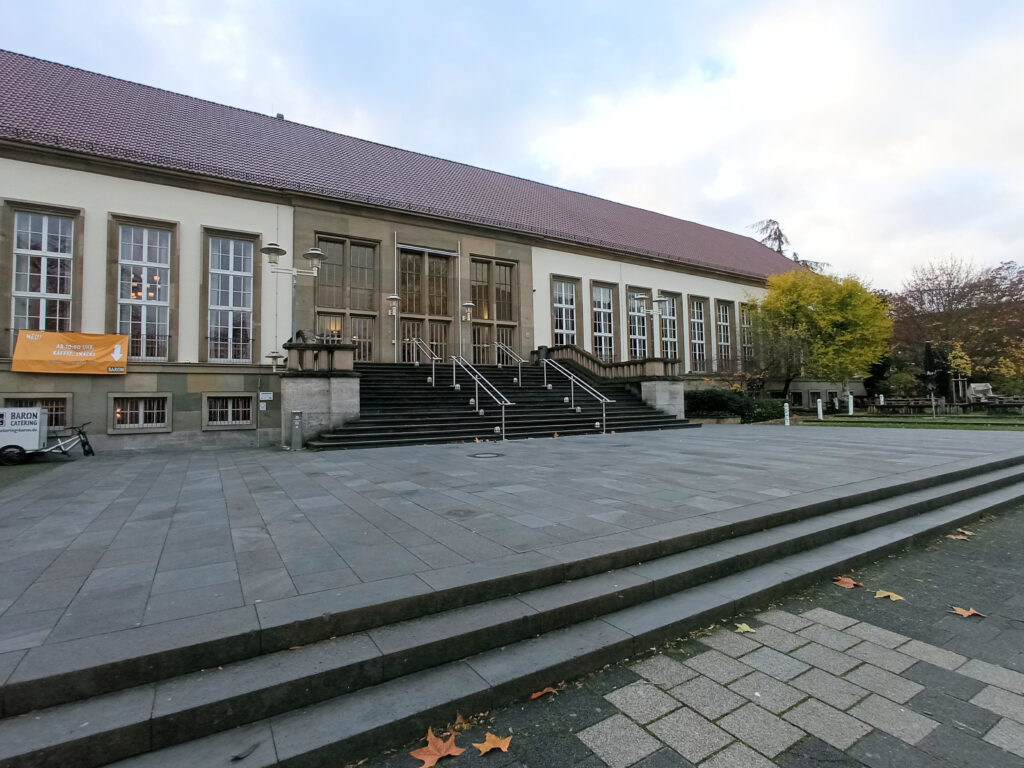Conference Site
The conference venue is located on the campus of Johannes Gutenberg University Mainz. Mainz is one of the major cities in the Rhine-Main region, well accessible by train, car, and air traffic. A direct suburban train line („S-Bahn“) connects Frankfurt airport, which is not only important for air traffic, but also a central hub of the European high speed train network, with Mainz Central Station („Hauptbahnhof“). The riding time is typically half an hour, and Mainz Hauptbahnhof is well connected to the local city trams and buses.

General info about Mainz: Official web site of the city
We cannot recommend to come to the site by car, since parking is scarce. Conversely, using public transport is quite convenient. From the Central Station it takes about 10 minutes to reach th university campus by bus or tram. You should head for reaching the bus/tram stop „Universität“, and then you are quite close to the conference site. A campus map is available on the pages of Mainz University. The smartphone apps „öffi“ (Android) or „ÖPNV Navigator“ (IOS) may help you in finding your best connections. Tickets may be purchased at vending machines.
We recommend that you find yourself a hotel in the city, and commute to the campus by public transport.
Some historical remarks:
Mainz University was founded in 1477, closed in 1798 under French occupation (except for a medical school, which was closed in 1823), and then re-founded, again under French occupation, in 1946, as „Johannes Gutenberg-Universität (JGU) Mainz“, which implies, in the university’s self-understanding, the „Gutenberg spirit“, meaning a tradition of innovation, which, as a very recent highlight, resulted in the development of mRNA vaccines against Covid-19 (the founders of BioNTech, located in Mainz, have a joint affiliation at JGU).
Originally on the premises of former barracks, during the years the campus grew further and further towards the west. JGU is the only German university of its size which hosts nearly all of its institutions on one single campus. It is now a full university covering essentially all academic subjects except engineering, and with approximately 30,000 students from more than 120 nations, it is one of the largest and most diverse universities in Germany. With 76 fields of study and 296 degree courses, JGU offers an extraordinarily broad range of courses. The campus is also home to five partner institutes involved in top-level non-university research: the Max Planck Institute for Chemistry (MPI-C), the Max Planck Institute for Polymer Research (MPI-P), the Helmholtz Institute Mainz (HIM), the Institute of Biotechnology and Drug Research (IBWF), and the Institute of Molecular Biology (IMB).
Founded in 1984, the Max Planck Institute for Polymer Research in Mainz will celebrate its 40th anniversary a few months before the conference. The institute’s mission is to gain molecular understanding and control of the complexity in structure and function and to unlock functionality on the relevant length and time scales, using an interdisciplinary approach that studies aspects of both chemistry and physics. These length scales range from the isolated understanding of individual polymers and macromolecules to the overall consideration of supermolecular structures and materials to material processing to achieve the desired macroscopic structure and properties.